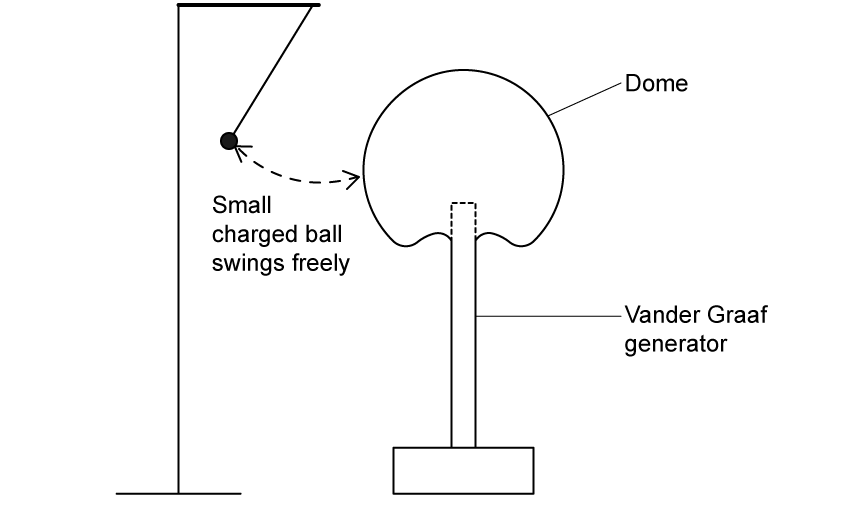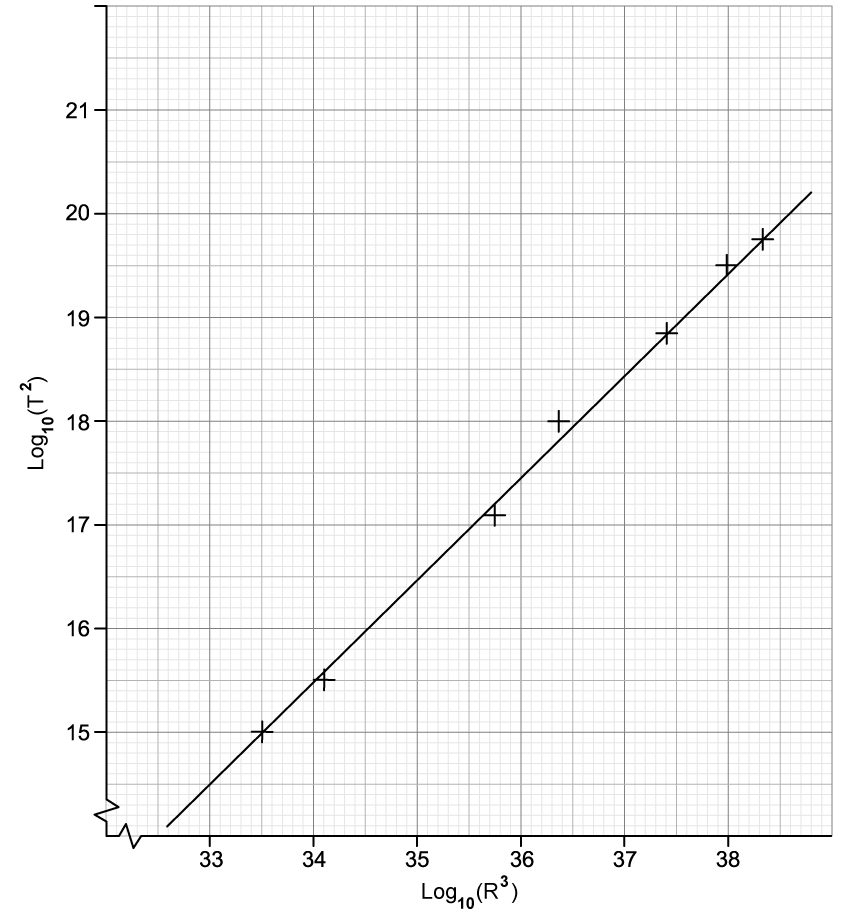Question 1a
This question is about forces on objects held in fields. The first part is about electrically charged objects and the second part concerns bodies moving in gravitational fields.
The dome of a Van der Graaf generator can be treated as a conducting metal sphere with radius 20 cm. The dome is charged so that it has uniform surface charge + 13.1 μC. A stand is set up nearby, so that a pith ball with radius 1 cm, mass 11 g and charge + 1.8 μC can swing freely near to the dome.
The line of motion of the ball can be treated as normal to the surface of the dome.

The pith ball is held at a point 40 cm from the surface of the dome and pushed, so that it moves towards the dome with initial speed of 2.2 m s−1. It stops moving and hangs suspended at a certain distance from the surface of the dome.
Question 1b
In an experiment a coin of 0.5 cm in diameter held at a distance of 55.3 cm from the eye appeared to be exactly the same size as the Moon. The coin was measured using a micrometer screw gauge and the distance to the eye using a metre rule.
The distance to the Moon is 384 400 km and the gravitational field strength on the surface of the Moon is 1.63 N kg–1.
Question 1c
The gravitational field strength on the surface of a particular planet is 1.6 N kg–1. The planet orbits a star of similar density, but the diameter of the star is 100 times greater than the planet.



